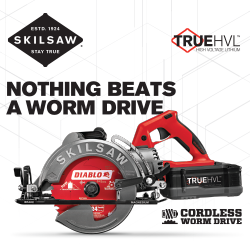
Air tool systems have some significant advantages and disadvantages in comparison to electric tools. The main advantage of air tools is there is only 1 motor which is on the compressor where as with electric tools each tool has its own engine. What this means is the individual air tools last longer, are more durable, cost less, weigh less, have smaller size and can provide more torque. The disadvantage is they require a compressor to operate which can be very large in size and inconvenient to move around. Once you have decided to commit to buying an air compressor you need to pick the right one that will work for you.
There are many factors in selecting the right air compressor including horse power, tank size, pounds per square inch (PSI), cubic feet per minute (CFM), noise, portability and power source. In addition to the stats of the air compressor you also need to make sure you are buying a quality product. A good compressor should last you years and years so make sure you can get a quality machine from a known manufacturer and that it will be easy to find maintenance supplies and replacement parts.
Horse Power is typically the first consideration when selecting a compressor but it is only part of the whole equation. In electric compressors it’s important to also look at voltage and amp ratings to see how much power the unit is truly able to produce. For instance, a 3 hp Ingersoll Rand compressor using 230 volts can probably out perform many import 5 hp compressors using standard 110 volt. In another case you are may be comparing two models of portable compressors each rated 2 hp 110 volt but if you look at the amp rating one may be 12 amp while the other is 15 amp.
Pounds per Square Inch (PSI) is also very important but again don’t over look the basics here. You only need enough PSI to power the tools you operate or plan to operate. If all your tools are 90 PSI a 110 or 135 PSI compressor is more than enough power and you don’t need to purchase a 175 or 200 PSI compressor.
Cubic Feet per Minute (CFM) perhaps is the most telling single stat for compressors as this measures how much air is flowing in a minute. CFM is used interchangeably with the terms Actual Cubic Feet per Minute (ACFM) or Inlet Cubic Feet per Minute (ICFM). Check your tool owner’s manual it should clearly provide your CPM for the tool. It is important to remember air pressure can change based on environmental variables such as temperature.
Tank Size is also an important factor however it is almost counter intuitive as a larger tank is actually more beneficial when using a smaller motor. The larger tank is used to store air so that the tool can actually use more air than the motor is able to produce for short periods. When a more powerful motor is used there is less need to store compressed air so the tank can actually be smaller in size. You would think the larger machines would need equally larger tank but that just is not the case.
Portability can be another big factor and often a disadvantage for air systems. The best environment for an air system is a shop or garage where there is room to permanently place a unit in a controlled environment. If you need a portable unit there are some options that do work well. A smaller electric unit such as the Ingersoll Rand DD2T2 works well with portable tools such as air nailers which typically have lower CFM. For a heavier user there are the air sled designs good for up to 14 CFM. For real power on the move the best solution is a truck mounted gas compressor which is capable of 25 CFM.
Hopefully this post will help you select the right air compressor for your needs. Ohio Power Tool carries a wide range of compressors from Ingersoll Rand and Chicago Pneumatic. Ohio Power Tool also offers free shipping on all compressors anywhere in the continental United States. If you have more specific questions about air compressors or air tools in general feel free to call the experts at 800-242-4424.



